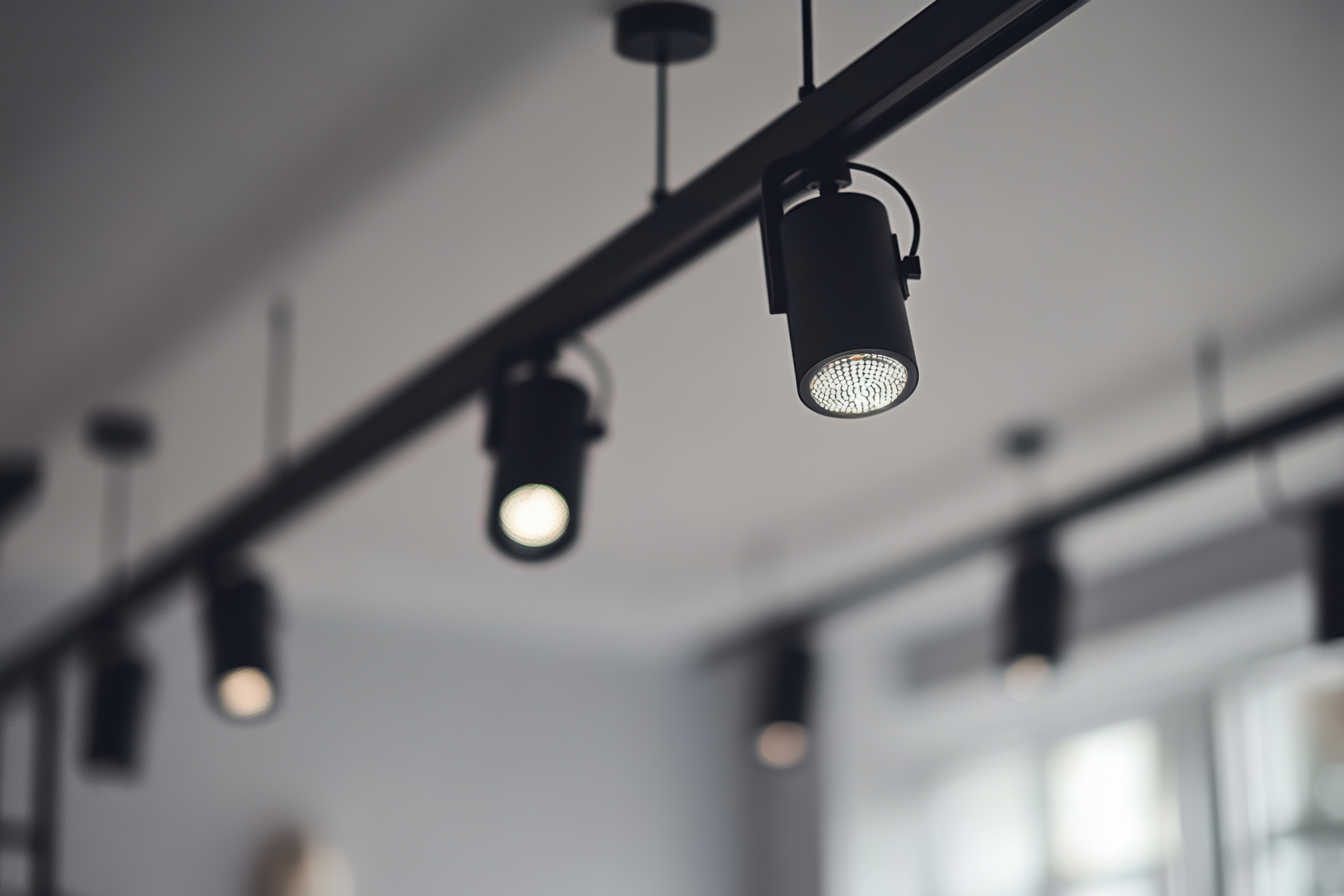Versatile, stylish and convenient, track lighting is now a popular choice for residential, commercial, galleries, hospitality and retail interiors. But is it right for your project?
Here, we’ll examine track lighting in detail, including its possibilities for your design and advantages over conventional lighting. In a later post, we will examine compatibility between manufacturers and our view on the future of track systems.
Which track type should you specify, low voltage or mains voltage, DALI or non-DALI?
Low-voltage track:
- 48V low-voltage track
- It requires a driver at the end of each section of the track.
- General use varies from residential right through to boutique lighting in retail.
- The fittings are the smallest on track as they do not require integral drivers.
- Most of these tracks run around 20 amps, but this can change depending on which country they are being used in and the codes of practice adopted. For example, if the
track were used in France, ENEC would apply, and the amp rating would be 25 amps. However, with UL approval in America, the same track can only have a 20-amp rating. - In the UK, the 48-volt track has a 20-amp rating.
- They can be suspended, recessed, or surface mounted. Some can even be rolled for bespoke radii around corners or shaped into structures using joining pieces, or couplers.
- One limiting factor on low-voltage tracks is the length you can run before you need another driver. The 48-volt track is the most favoured as it allows the furthest run and is the most flexible.
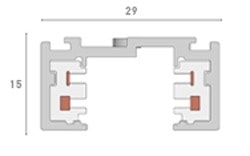

The Single Circuit track:
- It runs at 230 volts and has two conductors (most of which run at a maximum load of 16 amps).
- Low profile and discreet.
- It can be utilised for most projects, particularly residential ones, requiring a simple solution.
- Some are round in section, but rectangles and “D” shapes also exist, depending on your required style.
- Can be suspended, surface and recessed.
- The track fittings are predominantly a little bigger than the low-voltage ones, as they typically house the driver if they are LED.
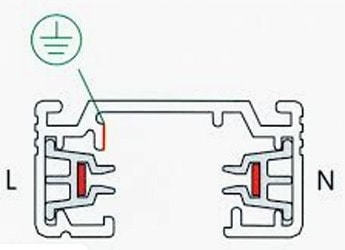
Mains Voltage Euro track, also with DALI control:
- Many companies make their version of this track, such as Global, Lytespan, three from Concord, Stucchi, etc. This is often referred to as Euro Track.
- Commonly used for Retail and commercial applications.
- Available in surface suspended and recessed.
- It can have three switched circuits, all adopting the same neutral, so it is 16 amp rated.
- It can take up to 3,680 watts of fittings (16 amp x 230 volt = 3680 watts), again depending on the location. In today’s world, this power capacity is ample for most LED fixtures.
- Simple scenes can be switched on this track due to the number of conductors running down the track.
- If you use this track, make sure you use the same kit supplied by only one manufacturer, as slight differences in the specification can cause connection problems.
- Please note that not all track adapters will be interchangeable. We will cover this in more detail in part 2.
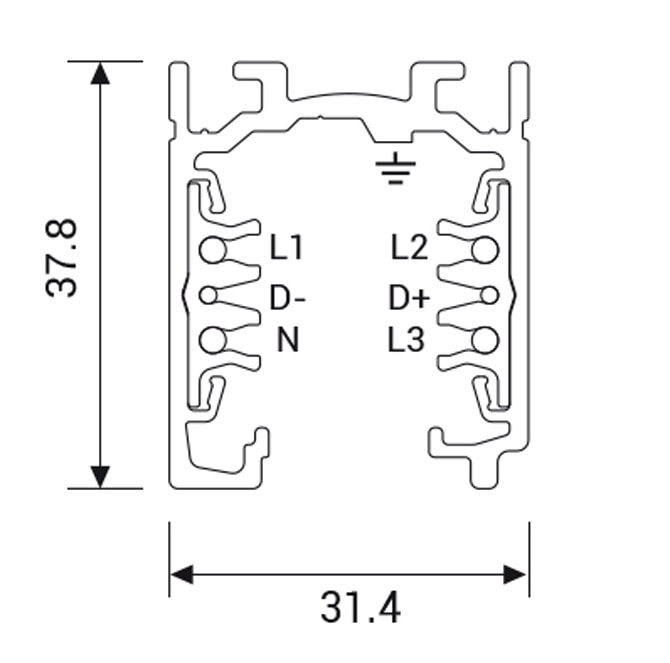
Is track lighting the best choice for your project?
Track lighting is an ideal choice if you’re looking to:
- Provide flexibility
- Illuminate spaces with undulating ceilings or no ceiling.
- Create different lighting solutions from one system.
- ( Pendants can even be hung from a track.)
- ( Create lines of light recessed in the ceiling following the architecture of the space.)
Track lighting also has practical benefits. Track fittings provide power along their length, so they are especially useful when you need to reach across a room or where it is not possible to recess any lighting. They’re also highly cost-effective, as the power only needs to be provided at one end, resulting in fewer electrical installation points over an array of downlighters.
Considerations
The art is to decide on the type of product to specify to create the desired effect.
You’ll need to consider factors such as:
- The use of the space and its occupants.
- The finishes on the walls, ceiling and floor (these will affect your lighting and how it interacts with its surroundings).
- The type of ceiling you’re working with – solid or suspended.
- How can the track be placed in the room? How can the perimeter be lit, offset, and set out?
Which spotlights should be specified?
With the advent of LED lighting, a huge variety of fittings are now available for track lighting, opening up the possibilities for your interior design. These range from accent fittings to ambient lighting and can be recessed into the track for a discreet look.
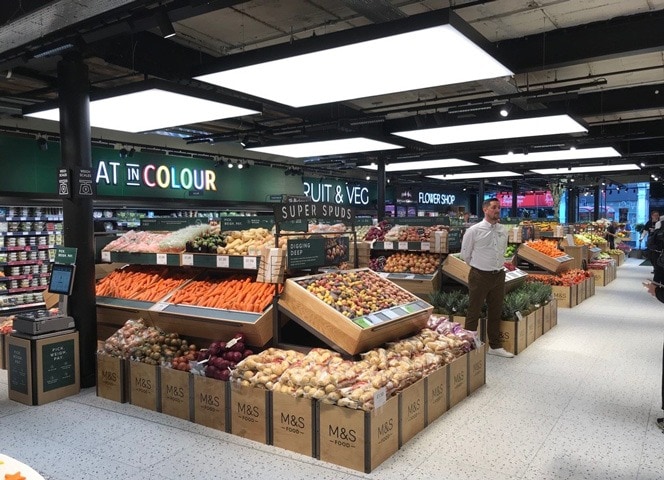
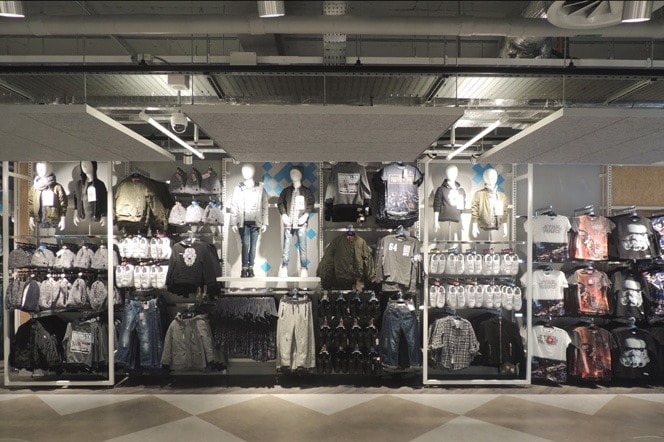
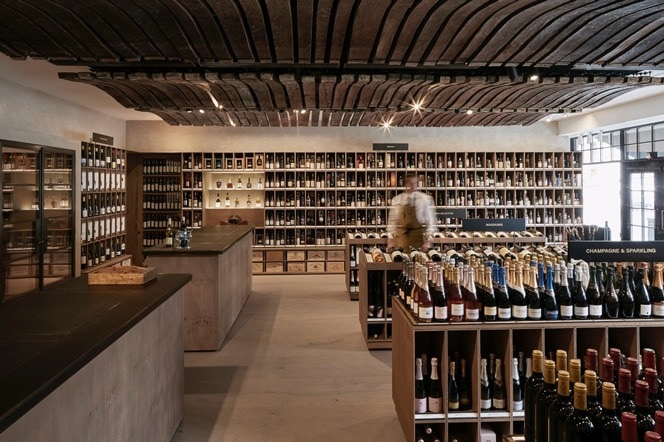
Take your lighting design to the next level.
Experienced lighting consultants like the LAPD team can help you make the right decisions.
